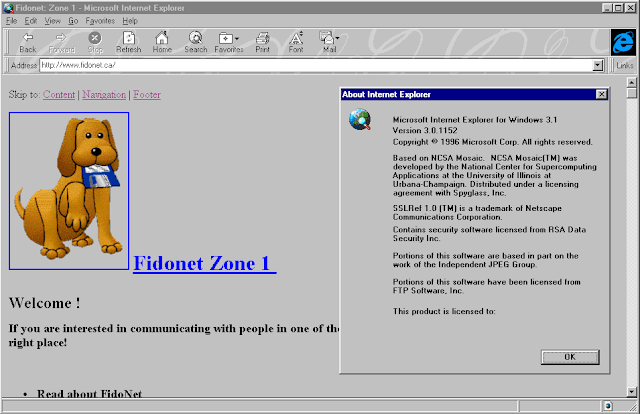At last the day has come, Microsoft has announced the end of the road for Internet Explorer. In many ways its bittersweet for the venerable browser that has been synonymous with the Windows operating system for 25 years. At one point Internet Explorer had a whopping 95% of the browser market share in 2006. The history of Internet Explorer is a storied one. The first version of the browser was released in August of 1995 alongside the upgrade to Windows 3.1x dubbed Windows 95. The early versions of the browser were buggy, and it was unable to compete with Netscape Navigator that released in 1994 and had captured most of the broad browser market at the time.
Internet Explorer 1.0 running on Windows 95 circa 1995
The release of Internet Explorer 4.0 in October 1997 is what really started the browser wars between it and Netscape Corporation. This war was fierce right from the start. The distribution methods of Internet Explorer became part of the historic anti-trust suit United States v Microsoft that made national headlines! Internet Explorer 4.0 came with new technologies such as Active Desktop, Windows Desktop Update, Outlook Express mail, Front Page Express, and Netmeeting. All these features competed directly with Netscape's Internet Application Suite.
From Internet Explorer version 4 to version 6 saw incremental upgrades to the browser to better suit its user base and better compete with Netscape. Microsoft eventually won the "Browser Wars" as the results of the Microsoft Anti-Trust trial came too late for Netscape who by that point had lost most of the browser market and eventually declared bankruptcy, and released its source code to the community.
Things were looking good for Microsoft and its browser. They had beaten their fierce competitor, and by 2004 had 95% of the browser market. This is where the problems began. The enxt version of Internet Explorer was delayed, as was the relwase of Windows Vista due to work on Windows XP Service Pack 2, which honestly was like a new OS release with the amount of security related changes that were made. When IE7 was finally released, it was much more buggy than previous versions, and more resource hungry and slowed most computers down. IE7 was the default browser that shipped with Windows Vista.
In 2008 Google released the 1st venison of its browser Google Chrome. Google's reasons were mostly due to frustration of IE not supporting certain W3C features, and relying on ActiveX. Google at one point had an add-on for IE called Google Chrome Frame to extend the functionality of IE and its web support.
During this time, Microsoft made incremental revisions to IE in versions 8-11 bringing some support for certain HTML5 technologies, but at a slower pace. Google Chrome on the other hand was adding more and more support every release, and refining its browser engine for speed and security. Eventually, Google Chrome became the dominate browser and Microsoft stopped developing Internet Explorer, simply staying on version 11, and only patching security issues.
Internet Explorer 11 on Windows 10
Microsoft eventually started a new browser with Windows 10 named Edge, and it used a brand new rendering engine EdgeHTML. It was much better than IE11, but it did not get wide spread adoption. Microsoft eventually decided to take the open source Chromium project (What Google Chrome is based on) and create an new Edge browser out of it with Microsoft Services integrated, and here we are today with the new Edge to replace Internet Explorer.








